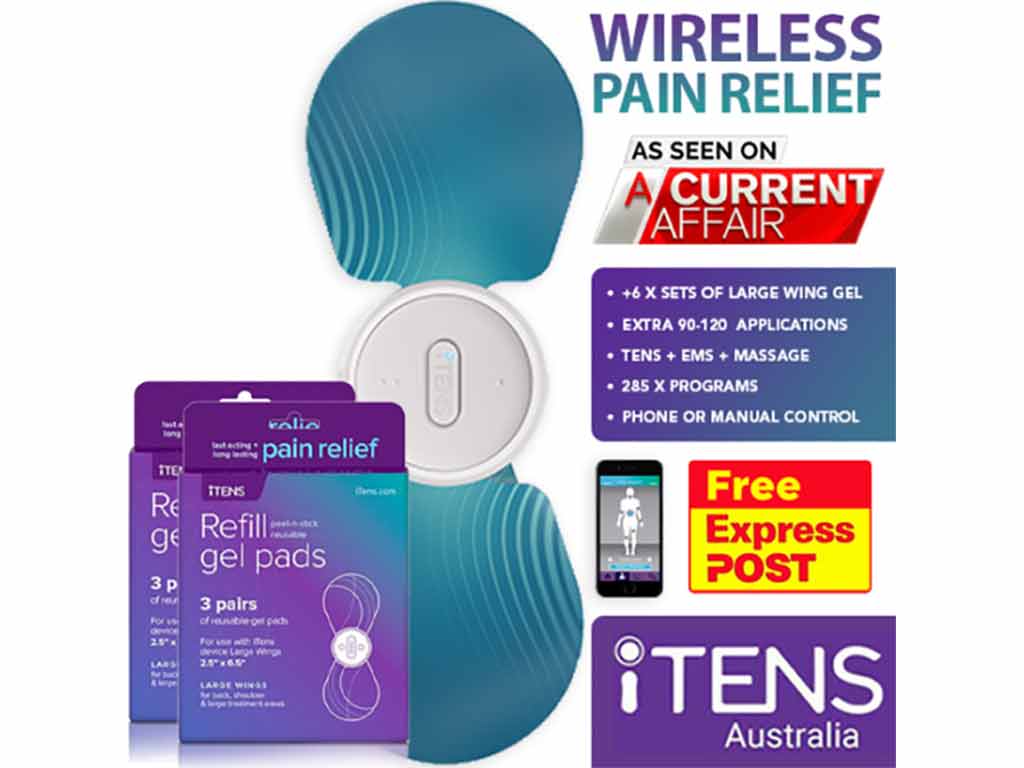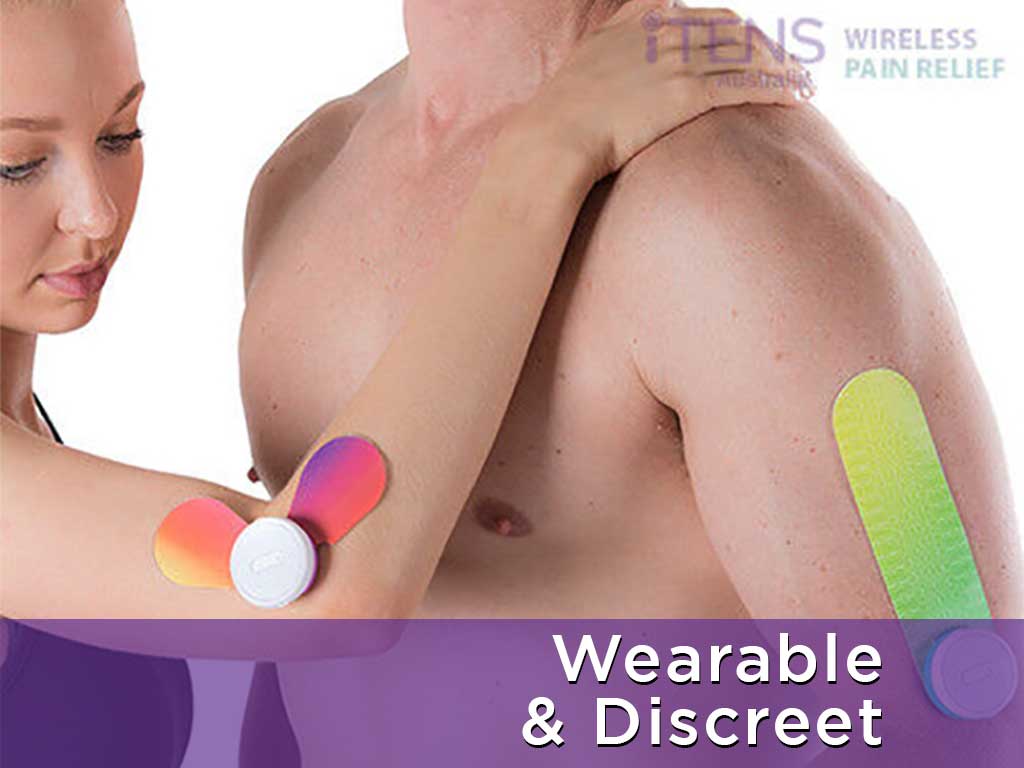
Transcutaneous Electrical Nerve Stimulation or TENS electrode machines are effective devices for pain relief. It uses low-voltage electrical currents to alleviate discomfort from various pain conditions. They have gained popularity in recent years for their non-invasive approach to pain management. Nevertheless, proper pad placement is essential for maximum effectiveness. Generally, place the electrodes on either side of the most tender spot. However, avoid sensitive areas like the head, throat, chest, spine, and joints.
Many people experience pain from daily activities, including chronic low-back pain and leg pain. It may also come from an underlying condition. The discomfort can range from mild to debilitating. Therefore, finding effective pain relief methods is crucial to manage the symptoms. TENS is one way to achieve pain alleviation while avoiding certain risks or side effects. In this article, we will delve into what a TENS machine is, its benefits, and the pad placement guide.
What is a TENS Electrode Machine?
A TENS electrode machine is a battery-operated device that uses electrical stimulation to relieve pain. It consists of a small control unit and sets of electrode pads connected by thin wires. However, some advanced devices have wireless functionalities. These types integrate Bluetooth technology to control the setting through a smartphone or tablet.
The device works by delivering small electrical pulses from the electrodes to the skin. The pulses target the sensory nerves to elicit peripheral nerve blockade. It stimulates the pain gate mechanism to restrict the transmission of pain signals to the brain. As a result, it reduces the perception of pain. The mild tingling sensations also distract the brain from pain sensations.
TENS machines also can trigger the release of endorphins. These natural painkillers inhibit peripheral nerve fibres from sending pain messages to the brain. Additionally, they increase blood circulation to the affected area. The increase in blood flow delivers more oxygen and nutrients, aiding in the faster recovery of damaged tissues, muscles, or nerves.
History of TENS Therapy
- Electrical nerve stimulation dates back to ancient Egyptians using electric eels for pain management benefits.
- At around 60 AD, Roman physician Scribonius Largus proposed contact with an “electric fish” for symptomatic pain relief.
- In the 16th to 18th centuries, electrostatic devices were developed to treat headaches and other pain.
- In the 19th century, the “Electreat” was used to help treat pain. However, the machine had size limitations, limited adjustments, and other constraints, leaving others to abandon it.
- The modern TENS machine was developed by Dr. Norman Shealy in the 1960s.
- Since then, TENS therapy has evolved and become widely available in the medical field.

Benefits of Using a TENS Electrode Machine
Using a TENS electrode machine offers several benefits for people with chronic or acute pain conditions. Firstly, it is a drug-free method of pain relief. It is a suitable alternative for people who prefer to reduce their reliance on pain medication. In addition, the procedure is non-invasive. This natural approach minimises the risk of side effects or infections that are associated with oral painkillers or surgery.
Secondly, TENS machines are portable and convenient. They are lightweight and discreet, allowing users to wear them at home, work, or while travelling. The device has simple controls and clear instructions, making it easy and safe to use. Thirdly, they offer customised pain relief. The adjustable settings of the device enable users to control the electrical stimulation according to their pain tolerance or comfort level.
Lastly, TENS therapy is not addictive. Individuals with chronic conditions can use an electrode machine as frequently as needed. There is no risk of developing dependence. However, it is important to alter the currents occasionally to prevent the build-up of tolerance to the treatment.
Medical Conditions Treated with TENS
TENS therapy can manage various types of pain. The common health conditions that the device can help treat include musculoskeletal pain, neuropathic pain, postoperative pain, and labour pain. Musculoskeletal pain is a condition affecting the muscles, joints, and bones. It includes osteoarthritis, fibromyalgia and sprains.
Neuropathic pain is dysfunction in the nervous system. It causes the damaged nerves to send constant pain messages to the brain. Furthermore, patients can experience temporary relief after surgical procedures. TENS can be used as a complementary method alongside physical therapy. Finally, TENS has shown significant relief from intense contractions during labour.

Proper Pad Placement When Using a TENS Electrode Machine
The usage of a TENS electrode machine follows a pad placement guide to ensure effectiveness and avoid potential risks. Generally, individuals should identify the specific area where the source of pain originates. Then, position the electrodes on either side or above and below the pain. This would depend on the location and type of the pain.
For lower back pain, the ideal pad placement is on either side of the spine, just above the hip bones. Place two additional electrodes below the ribcage. It is crucial to avoid putting the pads directly on the spinal cord as it may cause discomfort. For neck and shoulder pain, position two electrode pads on each side of the cervical spine, below the hairline and shoulder blades.
Moreover, for joint pains, position the electrodes around the affected joints, such as the ankle, elbow, or knee. Ensure that the skin is clean and dry before applying the pads. It is also important to avoid sensitive regions like the head, throat, and chest. Similarly, do not place the pads on open wounds, rashes, and infected or broken skin.
How to Use the Device
Operating a TENS device involves a few easy steps. Start by putting the electrode pads on the pain area. Then, turn on the unit and adjust the pulse rates, duration, and intensity. Low-frequency is ideal for chronic pain treatment, while high-frequency works for acute pain conditions.
Additionally, begin with the lowest pulse amplitude or intensity and gradually increase to a more comfortable level. If available, set the timer between 15 to 30 minutes. Allow a 20-minute break between sessions for those who need longer treatment time. After the session, turn off the device before removing the pads.
Conclusion
The TENS electrode machine is a versatile and effective device for managing pain and promoting rehabilitation. It consists of a compact, controllable power unit and adhesive electrode pads. The device delivers small electrical impulses through electrodes placed on the skin to target various areas of the body. It works by stimulating the natural pain relief mechanisms, such as pain gating and endorphin release. Hence, it provides a natural and non-invasive form of pain relief.
TENS therapy can help treat a wide range of pain conditions, including muscle pain, nerve pain, arthritis pain, and postoperative pain. It can be beneficial for people with chronic conditions as it does not have the risk of addiction or long-term side effects. Nevertheless, consulting a medical professional is vital to get proper advice on the correct placement and settings for the TENS machine. With proper use, individuals can experience effective pain management and improved quality of life.




















